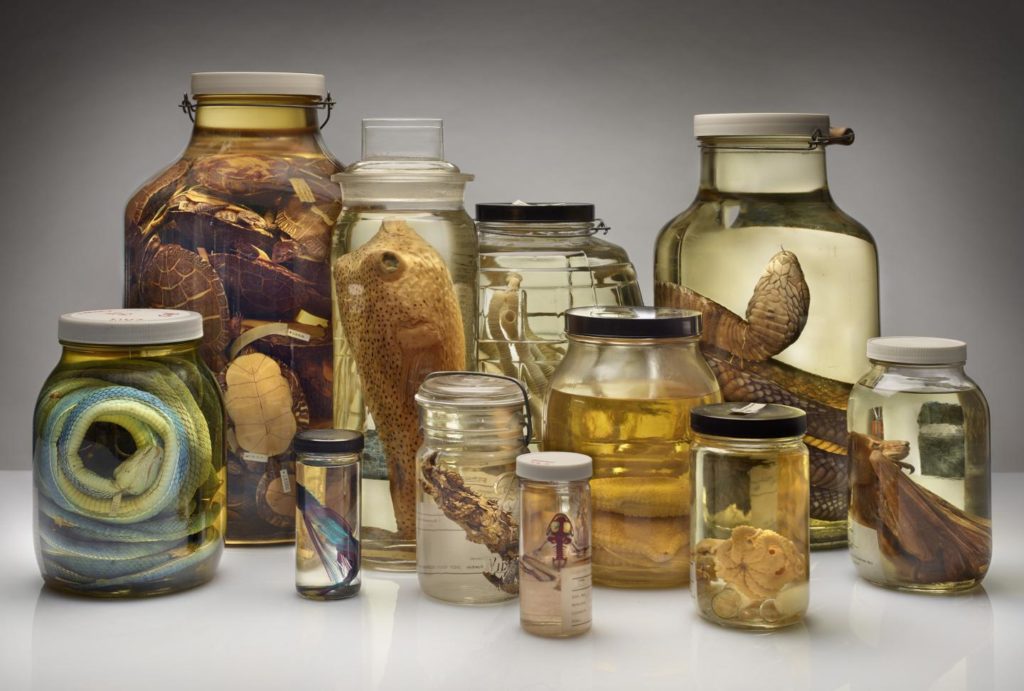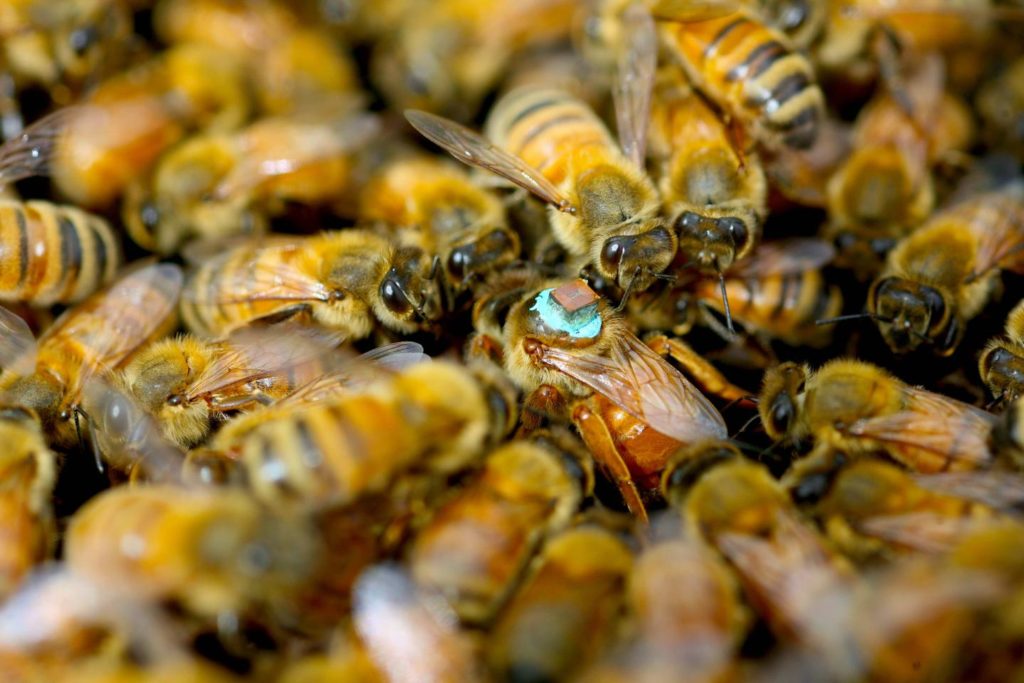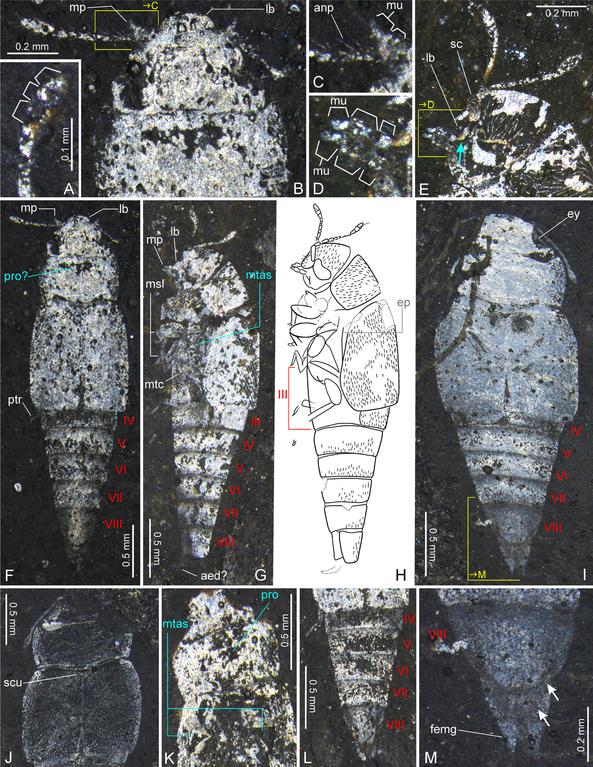PULLMAN, Wash. — A discovery by a Washington State University-led research team has the potential to inhibit the spread of West Nile virus as well as Zika and dengue viruses. In a study published today in the journal Cell Reports…
Tag: Entomology
New collection showcases cutting-edge techniques in insect morphology and systematics
Annapolis, MD; November 12, 2019–While the field of morphology–the study of the form and function of organisms–is centuries old, the last two decades have brought incredible leaps forward through the emergence of new technologies and genetic research methods. And the…
Larger than life: Augmented ants
The first app of its kind allows users to interact with biodiversity research through augmented reality
New collection showcases cutting-edge techniques in insect morphology and systematics
Annapolis, MD; November 12, 2019–While the field of morphology–the study of the form and function of organisms–is centuries old, the last two decades have brought incredible leaps forward through the emergence of new technologies and genetic research methods. And the…
Larger than life: Augmented ants
The first app of its kind allows users to interact with biodiversity research through augmented reality
Ant expert discovers newly emergent species in his backyard
Irrigation and urban forest may have drawn long-hidden species to the surface
WSU study shows insulin can increase mosquitoes’ immunity to West Nile virus
PULLMAN, Wash. — A discovery by a Washington State University-led research team has the potential to inhibit the spread of West Nile virus as well as Zika and dengue viruses. In a study published today in the journal Cell Reports…
New fossil pushes back physical evidence of insect pollination to 99 million years ago
A new study co-led by researchers in the U.S. and China has pushed back the first-known physical evidence of insect flower pollination to 99 million years ago, during the mid-Cretaceous period. The revelation is based upon a tumbling flower beetle…
New fossil pushes back physical evidence of insect pollination to 99 million years ago
A new study co-led by researchers in the U.S. and China has pushed back the first-known physical evidence of insect flower pollination to 99 million years ago, during the mid-Cretaceous period. The revelation is based upon a tumbling flower beetle…
Mated female mosquitoes are more likely to transmit malaria parasites
Female mosquitoes that have mated are more likely to transmit malaria parasites than virgin females, according to a study published November 7 in the open-access journal PLOS Pathogens by Farah Dahalan of Imperial College London, Mara Lawniczak from the Wellcome…
Helpful insects and landscape changes
We might not notice them, but the crops farmers grow are protected by scores of tiny invertebrate bodyguards. Naturally occurring arthropods like spiders and lady beetles patrol crop fields looking for insects to eat. These natural enemies keep pests under…
Stuck in a Polish nuclear weapon bunker cannibal wood ants found the way home
In a recent development of the story about wood ants trapped in a post-Soviet nuclear weapon bunker in Poland, scientists, led by Prof. Wojciech Czechowski, with the decisive contribution of Dr. István Maák, both from the Museum and Institute of…
Stuck in a Polish nuclear weapon bunker cannibal wood ants found the way home
In a recent development of the story about wood ants trapped in a post-Soviet nuclear weapon bunker in Poland, scientists, led by Prof. Wojciech Czechowski, with the decisive contribution of Dr. István Maák, both from the Museum and Institute of…
Stuck in a Polish nuclear weapon bunker cannibal wood ants found the way home
In a recent development of the story about wood ants trapped in a post-Soviet nuclear weapon bunker in Poland, scientists, led by Prof. Wojciech Czechowski, with the decisive contribution of Dr. István Maák, both from the Museum and Institute of…
Flies that ‘stick’ upside down landings use different approach than thought
Flies land upside down on a ceiling using rapid visually mediated rotational maneuvers
Ants: Jam-free traffic champions
Whether they occur on holiday routes or the daily commute, traffic jams affect cars as well as pedestrians. Scientists at the Research Center on Animal Cognition (CNRS/Université Toulouse III – Paul Sabatier) and the University of Arizona (United States) have…
Stingless bee species depend on a complex fungal community to survive
A report published in PLOS ONE describes key roles of various microorganisms in the development of the larvae of Scaptotrigona depilis. Researchers warn that this symbiotic relationship is threatened by the indiscriminate use of pesticides.
Data mining applied to scholarly publications to finally reveal Earth’s biodiversity
At a time when a million species are at risk of extinction, according to a recent UN report, ironically, we don’t know how many species there are on Earth, nor have we noted down all those that we have come…
All is FAIR in biodiversity research: Mandatory data audit at Pensoft’s journals
A thorough data auditing workflow ensures that datasets described in data papers across Pensoft’s OA journal portfolio are fit-to-use prior to peer review
Merger to bring the next generation of insect control to the global marketplace
Eco-friendly pheromone insect controls become feasible
Butterflies and plants evolved in sync, but moth ‘ears’ predated bats
GAINESVILLE, Fla. — Butterflies and moths rank among the most diverse groups in the animal kingdom, with nearly 160,000 known species, ranging from the iconic blue morpho to the crop-devouring armyworm. Scientists have long attributed these insects’ rich variety to…
Ants fight plant diseases
New research from Aarhus University shows that ants inhibit at least 14 different plant diseases.
Scientists discover new species of wasp-mimicking praying mantis
Peruvian mantis represents the first known example of a praying mantis species conspicuously mimicking a wasp
Mapping global biodiversity change
New international research reveals different rates of biodiversity across the globe
Phylogenetic analysis forces rethink of termite evolution
Despite their important ecological role as decomposers, termites are often overlooked in research. Evolutionary biologists at the Okinawa Institute of Science and Technology Graduate University (OIST) have constructed a new family tree for this unassuming insect brood, shedding unexpected light…
In Baltimore, lower income neighborhoods have bigger mosquitoes
Larger mosquitoes better at transmitting disease, put residents at risk
Newly identified compounds could help give fire ants their sting
Native to South America, imported fire ants have now spread to parts of North America and elsewhere around the world. These invasive pests have painful stings that, in some cases, can cause serious medical problems, such as hypersensitivity reactions, infections…
Key uncertainties identified for models of mosquito distribution in the US
Understanding model limitations could improve strategies to deal with mosquito-borne diseases
Deep3DFly: the deep-learning way to design fly-like robots
“Just think about what a fly can do,” says Professor Pavan Ramdya, whose lab at EPFL’s Brain Mind Institute, with the lab of Professor Pascal Fua in EPFL’s Institute for Computer Science, led the study. “A fly can climb across…
Threshold-dependent gene drives in wild populations
The BioScience Talks podcast features discussions of topical issues related to the biological sciences. By altering the heritability of certain traits, gene drive technologies have the potential to spread desired genes through wild populations. In practice, this could lead to…
When laying their eggs, tobacco hawkmoths avoid plants that smell of caterpillar feces
An olfactory co-receptor allows moths to avoid intraspecific competition
Meet the ‘mold pigs,’ a new group of invertebrates from 30 million years ago
CORVALLIS, Ore. – Fossils preserved in Dominican amber reveal a new family, genus and species of microinvertebrate from the mid-Tertiary period, a discovery that shows unique lineages of the tiny creatures were living 30 million years ago. The findings by…
MSU economist’s research on colony collapse disorder published in national journal
BOZEMAN – The work of a Montana State University professor examining the economic impacts of colony collapse disorder among commercial honeybees was published in the Journal of the Association of Environmental and Resource Economists last month. Randy Rucker, a professor…
Study finds large potential range for invasive spotted lanternfly
Suitable habitat abounds in US and Europe for tree and fruit pest
First maps of areas suitable for spotted lanternfly’s establishment in US and world
WAPATO, WASHINGTON, October 3, 2019–Maps identifying the areas suitable for establishment of the spotted lanternfly (SLF) in the United States and other countries have been published in the Journal of Economic Entomology by Agricultural Research Service scientists. The SLF, originally…
Bumble bee workers sleep less while caring for young
All animals, including insects, need their sleep. Or do they? That’s the question researchers reporting October 3 in the journal Current Biology are exploring in sleep studies of a surprising group of subjects: brood-tending bumble bee workers. Their studies show…
Ant-plant partnerships may play unexpected role in ant evolution
Text mining of 89,000 scientific papers reveals new evolutionary insights
Invitation to media: Insect science takes center stage in St. Louis, November 17-20
‘Insect Decline in the Anthropocene’ symposium highlights jam-packed Entomology 2019 schedule
How fungus-farming ants could help solve our antibiotic resistance problem
For the last 60 million years, fungus-growing ants have farmed fungi for food. In their cultivation of those fungi, they’ve successfully relied on bacteria-produced antimicrobial ingredients to protect their crops from other species of parasitic fungi. Now, researchers reporting in…

Virginia Tech entomology expert is available to discuss the dragonfly migrations that some say are appearing on weather radars
Though dragonflies annually migrate south search of warmer waters to lay their eggs, they seem to be doing so in much larger numbers this year, a Virginia Tech expert said. Their swarms have been so large that meteorologists have said…
Mosquito eye inspires artificial compound lens (video)
Anyone who’s tried to swat a pesky mosquito knows how quickly the insects can evade a hand or fly swatter. The pests’ compound eyes, which provide a wide field of view, are largely responsible for these lightning-fast actions. Now, researchers…
West Nile virus in the New World: Reflections on 20 years in pursuit of an elusive foe
Array of experts on mosquito-borne disease weigh lessons learned and progress made in the Journal of Medical Entomology

Researchers show how railroad worms produce red light
Differences in the molecular structures explain the different colors of this bioluminescence in different species. This discovery has the potential for new biotechnological applications, such as the imaging of muscles, blood and hemoglobin-rich tissue
Anemia may contribute to the spread of dengue fever
Iron-deficient blood makes it easier for dengue virus to colonize and multiply in mosquitoes’ guts
Aphid-stressed pines show different secondary organic aerosol formation
Plants emit gases, called volatile organic compounds (VOCs), that enter the atmosphere, where they can interact with other natural and human-made molecules to form secondary organic aerosols (SOAs). These tiny, suspended particles influence atmospheric processes, such as cloud formation and…
Burying beetle larvae know the best time to beg for food
It’s easy to imagine an adult bird standing over youngsters whose mouths are open wide for a pre-mashed meal. It’s more difficult to picture a beetle doing the same thing, but the burying beetle Nicrophorus quadripunctatus feeds its young by…

Insects as food and feed: research and innovation drive growing field
Entomophagy, insect agriculture showcased in new special issue of Annals of the Entomological Societ

Digital records of preserved plants and animals change how scientists explore the world
There’s a whole world behind the scenes at natural history museums that most people never see. Museum collections house millions upon millions of dinosaur bones, pickled sharks, dried leaves, and every other part of the natural world you can think…

Buzzkill?
Male honeybees inject queens with blinding toxins during sex

Identity crisis for fossil beetle helps rewrite beetle family tree
There are more different kinds of beetle than just about any other kind of animal–scientists have described about 5,800 different species of mammals, compared with nearly 400,000 species of beetles. Of those 400,000 kinds of beetles, more than 64,000 species…